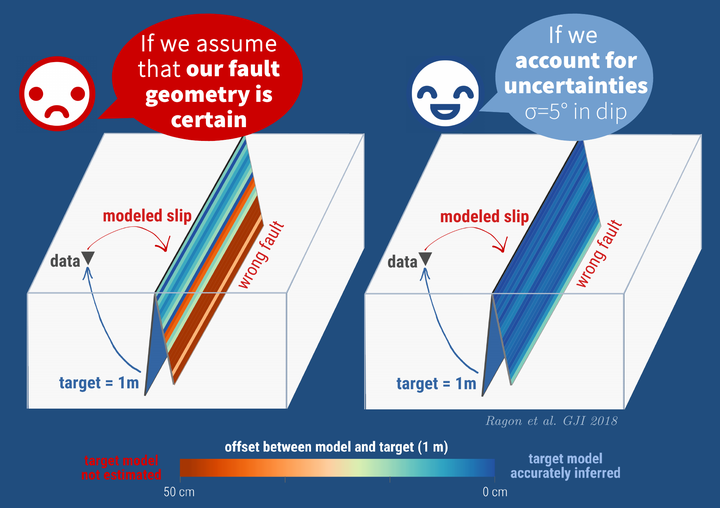Accounting for uncertain fault geometry in earthquake source inversions--I: theory and simplified application

Abstract
The ill-posed nature of earthquake source estimation derives from several factors including the quality and quantity of available observations and the fidelity of our forward theory. Observational errors are usually accounted for in the inversion process. Epistemic errors, which stem from our simplified description of the forward problem, are rarely dealt with despite their potential to bias the estimate of a source model. In this study, we explore the impact of uncertainties related to the choice of a fault geometry in source inversion problems. The geometry of a fault structure is generally reduced to a set of parameters, such as position, strike and dip, for one or a few planar fault segments. While some of these parameters can be solved for, more often they are fixed to an uncertain value. We propose a practical framework to address this limitation by following a previously implemented method exploring the impact of uncertainties on the elastic properties of our models. We develop a sensitivity analysis to small perturbations of fault dip and position. The uncertainties of our fixed fault geometry are included in the inverse problem under the formulation of the misfit covariance matrix that combines both prediction and observation uncertainties. We validate this approach with the simplified case of a fault that extends infinitely along strike, using both Bayesian and optimization formulations of a static slip inversion. If epistemic errors are ignored, predictions are overconfident in the data and slip parameters are not reliably estimated. In contrast, inclusion of uncertainties in fault geometry allows us to infer a robust posterior slip model. Epistemic uncertainties can be many orders of magnitude larger than observational errors for great earthquakes (Mw > 8). Not accounting for uncertainties in fault geometry may partly explain observed shallow slip deficits for continental earthquakes. Similarly, ignoring the impact of epistemic errors can also bias estimates of near-surface slip and predictions of tsunamis induced by megathrust earthquakes.